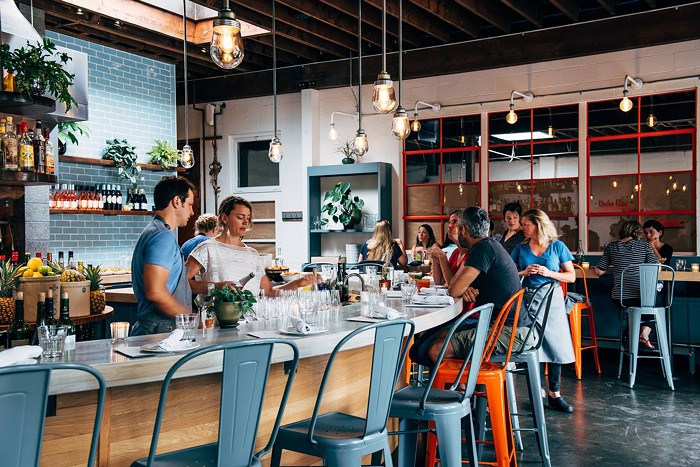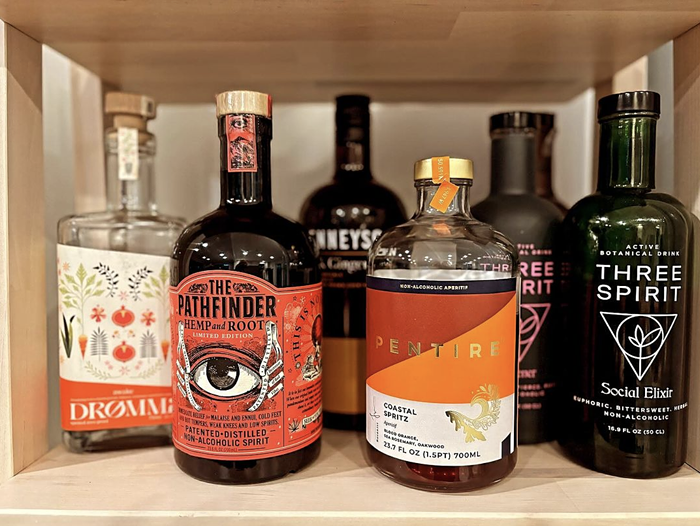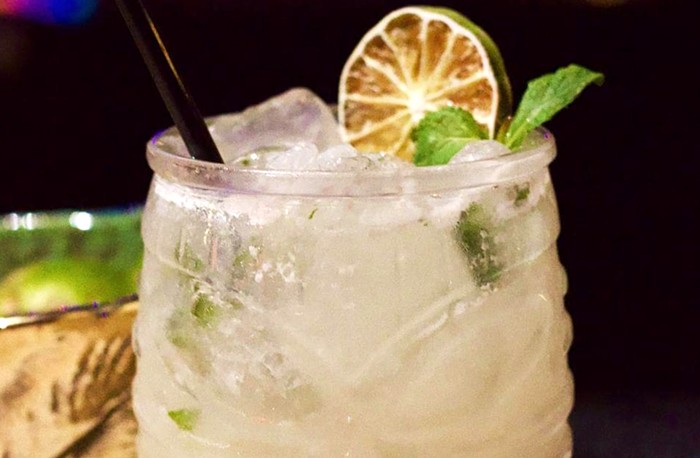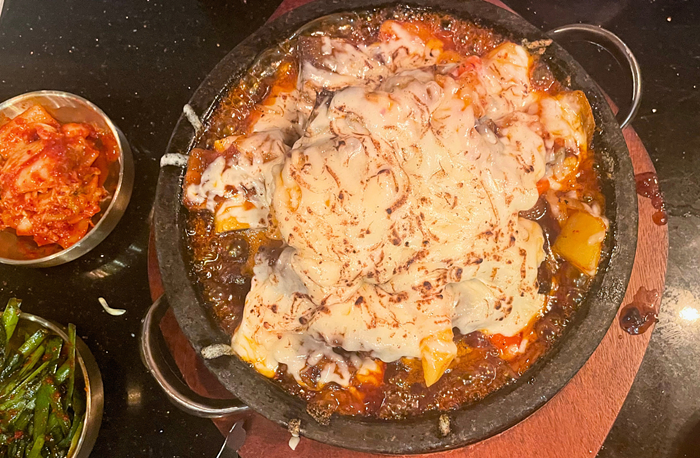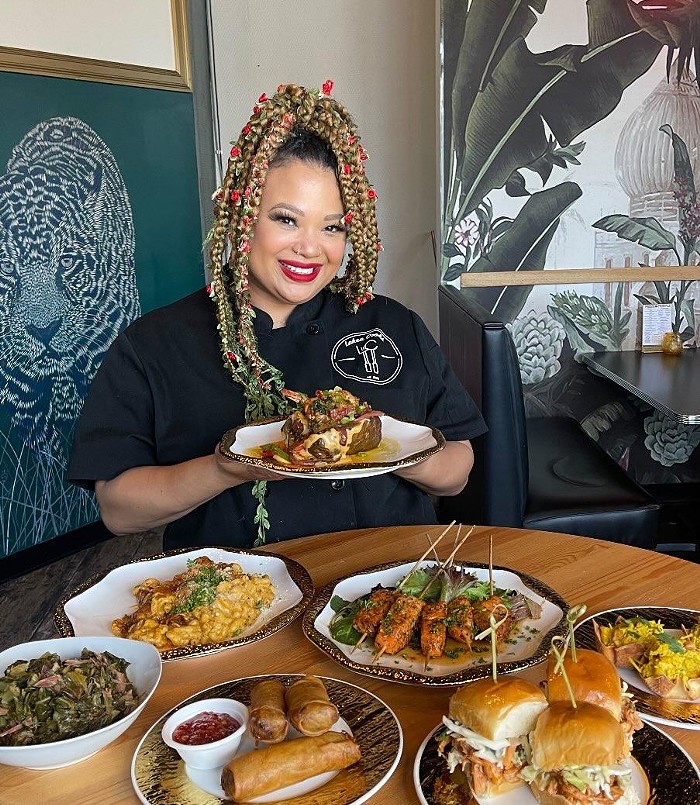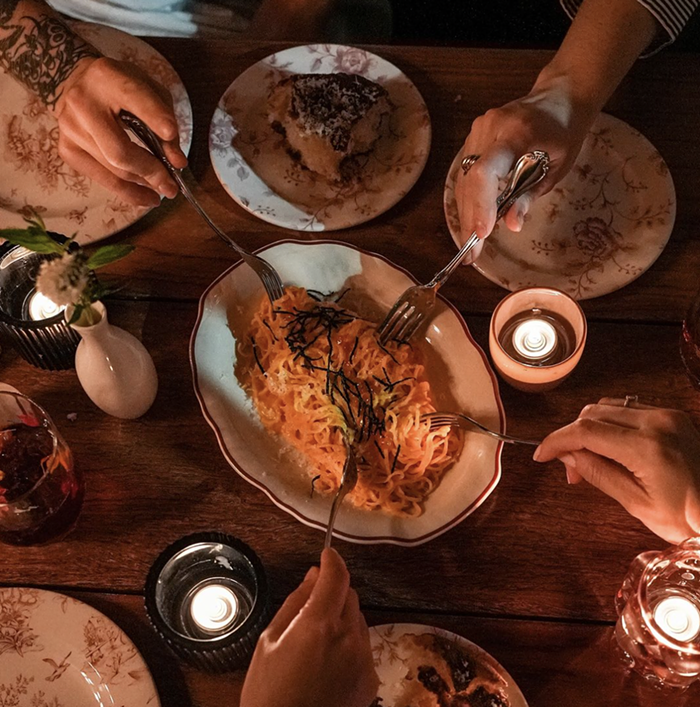On December 7, Tini Bigs, which has been open "more consecutive days in a row" than almost any other independent bar west of the Mississippi, celebrates its 20th anniversary. And they're throwing a crazy, 50-percent-off-everything party to mark the occasion.
Twenty years is impressive when you consider the average restaurant life span in Seattle. Especially when you think about the various business-killing obstacles Tini Bigs has navigated over the years. Prior to the 2005 smoking ban, it was one of the few bars in Seattle where patrons could puff a cigar any time of day (the smoke-eating machines still hang from the ceiling), and Scotch-loving cigar smokers were a crucial part of the clientele. After the ban, owner Keith Robbins says, business dropped by 40 percent and his entire staff turned over in six months. Business from the Sonics, who played at nearby KeyArena, saved him, he says, but then that floor fell out too. Regardless, the bar survived.
How? "Really, really good staff," says Robbins. "That's all. It's not about the owner! They're the ones that are face-to-face with the guests." He jokes that he hasn't been behind the bar "since 1912."
As thrilled as he is to have made it to 20, it's also a sad occasion for him, as 20 will be Tini's finale. The building was bought last year, and the developer plans to turn it into—big surprise—condominiums with mixed-use commercial space in the bottom. Robbins doesn't have a firm date, but he expects to be out by the end of January. Though he hopes to find a new location for Tini's tiki-themed sister bar, Hula Hula, beloved for its year-round karaoke, Robbins says it's last call for his classic corner lounge.
"It seems to me that if I were to move Tini Bigs, everyone would just say, 'You know what? I miss the old Tini,'" he says. "No matter what you did, no matter how similar you could make it feel, they would just say, 'Remember the old Tini?'" Indeed, the bar, with its tin ceiling and ornate early-1900s wooden back bar, is a place that feels laden with memories of the type one cannot re-create in new construction. Robbins, for his part, has certainly collected a few. And, after several decades of working in the Seattle bar scene, he's also got some pretty good perspective on where it's been and where it's going.
His history in the restaurant industry stretches well beyond Tini Bigs, as he slung his first plate back in his Queen Anne High School days. In 1976, he "did a bit of everything" at a place called the Turbulent Turtle, which was in Un Bien's current Shilshole location. It was, he says, one of the first places in Seattle to do gourmet burgers, and he remembers people waiting as long as an hour and a half to get their hands on one.
After that, he headed to Portland for college, waiting tables the whole way through. Apparently, going from college right back into the restaurant industry isn't a phenomenon exclusively among millennials. It's exactly what Robbins did when he moved back to Seattle. (During that time, interestingly enough, he worked at the original McCormick's Fish House with Tom Douglas. Asked for a wild story from Tom's younger days, he would only say, "Y'know, Tom Douglas, his stories are all wild.")
Eventually, he wound up bartending at a little Belltown tavern called the Watertown, which would soon be the first bar he bought. Back then, he remembers, Belltown was a very different kind of wasteland.
"Before it was Belltown, it was Skid Row," Robbins says. "Lots of transients. It was pre-crack, so it was all alcoholics."
Most of the buildings in the neighborhood were unoccupied, he says, including the one the Watertown was in. However, the bar was something of an oasis amid the urban blight, being well-loved among restaurant-industry types for its unusually wide selection of booze. It's easy to forget, in the midst of our current craft-beer bonanza, that a 60-item beer cooler wasn't always standard practice.
"That old Watertown was really pioneering," he says. "It was young and fun. When I first started going to the Watertown when I didn't own it, it was like the first place in Seattle that had a whole cooler of different beers. This is in the '80s. Even restaurants didn't have but one white and one red by the glass. You'd go into this dive bar in Belltown and they had, I dunno, a dozen wines by the glass."
When he opened Tini Bigs, he wanted to apply that same pioneering spirit to cocktails. As the 20th anniversary party's press release jokes, they were "pouring up craft cocktails at a time when today's bearded lumbersexuals and man-bun-sporting mixologists were likely graduating preschool." (To be fair, this man-bun-sporting mixologist was in second grade.) At the time, he says, you could really get a good cocktail only at hotels and fancy restaurants. The idea of a neighborhood cocktail bar was a foreign one.
"There weren't any in Seattle," Robbins exclaims. "You go to any city, you go to the East Coast, all the best bars are on the corner. They're all on the corner, they've been there forever, they're cocktail lounges, and that was what I wanted to do." He was going to name the bar Big Tinis, to denote its copious pours, but thought that wasn't original enough. Tini Bigs, however, sounded "like it could be some gangster place on the corner from the '30s!" His concept was a hit, he says, but Seattleites weren't prepared for all that booze.
"When we opened, people weren't used to drinking cocktails," he says. "It wasn't that they didn't know what to order, it was that they didn't know how to drink. We had so many pukers the first six months! Nobody had had martinis before." Martinis in the 1990s, he notes, were anything that came in a stem glass, including apple-tinis, chocolate-tinis, lemon-tinis, and all manner of other alcohol-obfuscating preparations.
After all that time introducing Seattleites to the joys (and, apparently, the agonies) of cocktail drinking, what does he think of our modern obsession with mixology? Mostly, he's for it, marveling at how "you can go to any neighborhood bar and get a good drink." However, he does have a few caveats.
"I'm okay with the whole mixologist thing," he says, but take your job more seriously than yourself. Make the best drink you can make, but it's not about you, it's about the drink." He does caution that our current drinking culture, in its quest for ever more esoteric ingredients and eclectic concoctions, sometimes strays from its core mission. Which is, to him, to promote genuine human interaction.
"For the most part, I hired people who could bartend and socialize, which I think is something that has gone away," he says. "Your bartender used to be your shrink. You used to be able to go to your bartender and tell them all your problems. Now the bartenders don't have time to hear your problems because they're making a 16-ingredient cocktail!"
However, Robbins remains cautiously optimistic that the social side of bars will have its day again. Though he theorizes that the city is past its saturation point for bars and restaurants, and attributes that to the explosion of the same sub-condo commercial spaces that will be replacing him, he thinks that putting a bar in beneath all those new residents might not be such a bad thing.
"Maybe it will all come full circle, and bars will be much less of a showplace and more of a social place." As he points out, "It's hard to get a drink on the internet." ![]()

